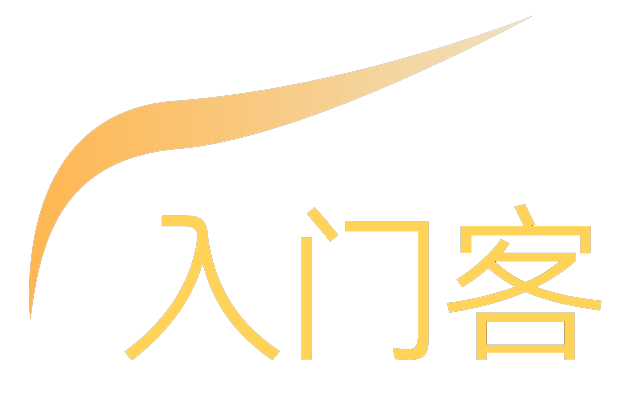生成对抗网络DCGAN+Tensorflow代码学习笔记(二)----utils.py
utils.py主要是定义了各种对图像处理的函数,主要负责图像的一些基本操作,获取图像、保存图像、图像翻转,和利用moviepy模块可视化训练过程。相当于其他3个文件的头文件。
"""
Some codes from https://github.com/Newmu/dcgan_code
"""
from __future__ import division
import math
import json
import random
import pprint
import scipy.misc
import numpy as np
from time import gmtime, strftime
from six.moves import xrange
import tensorflow as tf
import tensorflow.contrib.slim as slim
#1.首先定义了一个pp = pprint.PrettyPrinter(),以方便打印数据结构信息
pp = pprint.PrettyPrinter()
#2.定义了get_stddev函数,是三个参数乘积后开平方的倒数,应该是为了随机化用
get_stddev = lambda x, k_h, k_w: 1/math.sqrt(k_w*k_h*x.get_shape()[-1])
def show_all_variables():
model_vars = tf.trainable_variables()
slim.model_analyzer.analyze_vars(model_vars, print_info=True)
def get_image(image_path, input_height, input_width,
resize_height=64, resize_width=64,
crop=True, grayscale=False):
#根据图像路径参数读取路径,根据灰度化参数选择是否进行灰度化
image = imread(image_path, grayscale)
#对图像参照输入的参数进行裁剪
return transform(image, input_height, input_width,
resize_height, resize_width, crop)
#存储新图像
def save_images(images, size, image_path):
return imsave(inverse_transform(images), size, image_path)
#判断grayscale参数是否进行范围灰度化,并进行类型转换为np.float
def imread(path, grayscale = False):
if (grayscale):
return scipy.misc.imread(path, flatten = True).astype(np.float)
else:
return scipy.misc.imread(path).astype(np.float)
#返回新图像
def merge_images(images, size):
return inverse_transform(images)
# 产生一个大画布,用来保存生成的 batch_size 个图像
def merge(images, size):
#图像的高、宽
h, w = images.shape[1], images.shape[2]
if (images.shape[3] in (3,4)):
#图像的通道数
c = images.shape[3]
# 循环使得画布特定地方值为某一幅图像的值
img = np.zeros((h * size[0], w * size[1], c))
for idx, image in enumerate(images):
i = idx % size[1]
j = idx // size[1]
img[j * h:j * h + h, i * w:i * w + w, :] = image
return img
elif images.shape[3]==1:
img = np.zeros((h * size[0], w * size[1]))
for idx, image in enumerate(images):
i = idx % size[1]
j = idx // size[1]
img[j * h:j * h + h, i * w:i * w + w] = image[:,:,0]
return img
else:
raise ValueError("in merge(images,size) images parameter "
"must have dimensions: HxW or HxWx3 or HxWx4")
#首先将merge()函数返回的图像,用 np.squeeze()函数移除长度为1的轴。
# 然后利用scipy.misc.imsave()函数将新图像保存到指定路径中。
def imsave(images, size, path):
image = np.squeeze(merge(images, size))
return scipy.misc.imsave(path, image)
#对图像的H和W与crop的H和W相减,得到取整的值,根据这个值作为下标依据来scipy.misc.resize图像。
def center_crop(x, crop_h, crop_w,
resize_h=64, resize_w=64):
if crop_w is None:
crop_w = crop_h
h, w = x.shape[:2]
j = int(round((h - crop_h)/2.))
i = int(round((w - crop_w)/2.))
return scipy.misc.imresize(
x[j:j+crop_h, i:i+crop_w], [resize_h, resize_w])
#对输入的图像进行裁剪
def transform(image, input_height, input_width,
resize_height=64, resize_width=64, crop=True):
if crop:
cropped_image = center_crop(
image, input_height, input_width,
resize_height, resize_width)
else:
cropped_image = scipy.misc.imresize(image, [resize_height, resize_width])
return np.array(cropped_image)/127.5 - 1.
#对图像进行翻转后返回新图像
def inverse_transform(images):
return (images+1.)/2.
#获取每一层的权值、偏置值
def to_json(output_path, *layers):
with open(output_path, "w") as layer_f:
lines = ""
for w, b, bn in layers:
layer_idx = w.name.split("/")[0].split("h")[1]
B = b.eval()
if "lin/" in w.name:
W = w.eval()
depth = W.shape[1]
else:
W = np.rollaxis(w.eval(), 2, 0)
depth = W.shape[0]
biases = {"sy": 1, "sx": 1, "depth": depth, "w": ["%.2f" % elem for elem in list(B)]}
if bn != None:
gamma = bn.gamma.eval()
beta = bn.beta.eval()
gamma = {"sy": 1, "sx": 1, "depth": depth, "w": ["%.2f" % elem for elem in list(gamma)]}
beta = {"sy": 1, "sx": 1, "depth": depth, "w": ["%.2f" % elem for elem in list(beta)]}
else:
gamma = {"sy": 1, "sx": 1, "depth": 0, "w": []}
beta = {"sy": 1, "sx": 1, "depth": 0, "w": []}
if "lin/" in w.name:
fs = []
for w in W.T:
fs.append({"sy": 1, "sx": 1, "depth": W.shape[0], "w": ["%.2f" % elem for elem in list(w)]})
lines += """
var layer_%s = {
"layer_type": "fc",
"sy": 1, "sx": 1,
"out_sx": 1, "out_sy": 1,
"stride": 1, "pad": 0,
"out_depth": %s, "in_depth": %s,
"biases": %s,
"gamma": %s,
"beta": %s,
"filters": %s
};""" % (layer_idx.split("_")[0], W.shape[1], W.shape[0], biases, gamma, beta, fs)
else:
fs = []
for w_ in W:
fs.append({"sy": 5, "sx": 5, "depth": W.shape[3], "w": ["%.2f" % elem for elem in list(w_.flatten())]})
lines += """
var layer_%s = {
"layer_type": "deconv",
"sy": 5, "sx": 5,
"out_sx": %s, "out_sy": %s,
"stride": 2, "pad": 1,
"out_depth": %s, "in_depth": %s,
"biases": %s,
"gamma": %s,
"beta": %s,
"filters": %s
};""" % (layer_idx, 2**(int(layer_idx)+2), 2**(int(layer_idx)+2),
W.shape[0], W.shape[3], biases, gamma, beta, fs)
layer_f.write(" ".join(lines.replace(""","").split()))
#根据图像集的长度和持续的时间做一个除法,然后返回每帧图像。最后视频修剪并制作成GIF动画。
def make_gif(images, fname, duration=2, true_image=False):
import moviepy.editor as mpy
def make_frame(t):
try:
x = images[int(len(images)/duration*t)]
except:
x = images[-1]
if true_image:
return x.astype(np.uint8)
else:
return ((x+1)/2*255).astype(np.uint8)
clip = mpy.VideoClip(make_frame, duration=duration)
clip.write_gif(fname, fps = len(images) / duration)
#保存图像可视化
def visualize(sess, dcgan, config, option):
image_frame_dim = int(math.ceil(config.batch_size**.5))
if option == 0:
z_sample = np.random.uniform(-0.5, 0.5, size=(config.batch_size, dcgan.z_dim))
samples = sess.run(dcgan.sampler, feed_dict={dcgan.z: z_sample})
save_images(samples, [image_frame_dim, image_frame_dim], "./samples/test_%s.png" % strftime("%Y-%m-%d-%H-%M-%S", gmtime()))
elif option == 1:
values = np.arange(0, 1, 1./config.batch_size)
for idx in xrange(dcgan.z_dim):
print(" [*] %d" % idx)
z_sample = np.random.uniform(-1, 1, size=(config.batch_size , dcgan.z_dim))
for kdx, z in enumerate(z_sample):
z[idx] = values[kdx]
if config.dataset == "mnist":
y = np.random.choice(10, config.batch_size)
y_one_hot = np.zeros((config.batch_size, 10))
y_one_hot[np.arange(config.batch_size), y] = 1
samples = sess.run(dcgan.sampler, feed_dict={dcgan.z: z_sample, dcgan.y: y_one_hot})
else:
samples = sess.run(dcgan.sampler, feed_dict={dcgan.z: z_sample})
save_images(samples, [image_frame_dim, image_frame_dim], "./samples/test_arange_%s.png" % (idx))
elif option == 2:
values = np.arange(0, 1, 1./config.batch_size)
for idx in [random.randint(0, dcgan.z_dim - 1) for _ in xrange(dcgan.z_dim)]:
print(" [*] %d" % idx)
z = np.random.uniform(-0.2, 0.2, size=(dcgan.z_dim))
z_sample = np.tile(z, (config.batch_size, 1))
#z_sample = np.zeros([config.batch_size, dcgan.z_dim])
for kdx, z in enumerate(z_sample):
z[idx] = values[kdx]
if config.dataset == "mnist":
y = np.random.choice(10, config.batch_size)
y_one_hot = np.zeros((config.batch_size, 10))
y_one_hot[np.arange(config.batch_size), y] = 1
samples = sess.run(dcgan.sampler, feed_dict={dcgan.z: z_sample, dcgan.y: y_one_hot})
else:
samples = sess.run(dcgan.sampler, feed_dict={dcgan.z: z_sample})
try:
make_gif(samples, "./samples/test_gif_%s.gif" % (idx))
except:
save_images(samples, [image_frame_dim, image_frame_dim], "./samples/test_%s.png" % strftime("%Y-%m-%d-%H-%M-%S", gmtime()))
elif option == 3:
values = np.arange(0, 1, 1./config.batch_size)
for idx in xrange(dcgan.z_dim):
print(" [*] %d" % idx)
z_sample = np.zeros([config.batch_size, dcgan.z_dim])
for kdx, z in enumerate(z_sample):
z[idx] = values[kdx]
samples = sess.run(dcgan.sampler, feed_dict={dcgan.z: z_sample})
make_gif(samples, "./samples/test_gif_%s.gif" % (idx))
elif option == 4:
image_set = []
values = np.arange(0, 1, 1./config.batch_size)
for idx in xrange(dcgan.z_dim):
print(" [*] %d" % idx)
z_sample = np.zeros([config.batch_size, dcgan.z_dim])
for kdx, z in enumerate(z_sample): z[idx] = values[kdx]
image_set.append(sess.run(dcgan.sampler, feed_dict={dcgan.z: z_sample}))
make_gif(image_set[-1], "./samples/test_gif_%s.gif" % (idx))
new_image_set = [merge(np.array([images[idx] for images in image_set]), [10, 10])
for idx in range(64) + range(63, -1, -1)]
make_gif(new_image_set, "./samples/test_gif_merged.gif", duration=8)
def image_manifold_size(num_images):
manifold_h = int(np.floor(np.sqrt(num_images)))
manifold_w = int(np.ceil(np.sqrt(num_images)))
assert manifold_h * manifold_w == num_images
return manifold_h, manifold_w
声明:该文观点仅代表作者本人,入门客AI创业平台信息发布平台仅提供信息存储空间服务,如有疑问请联系rumenke@qq.com。
- 上一篇:没有了
- 下一篇:没有了

